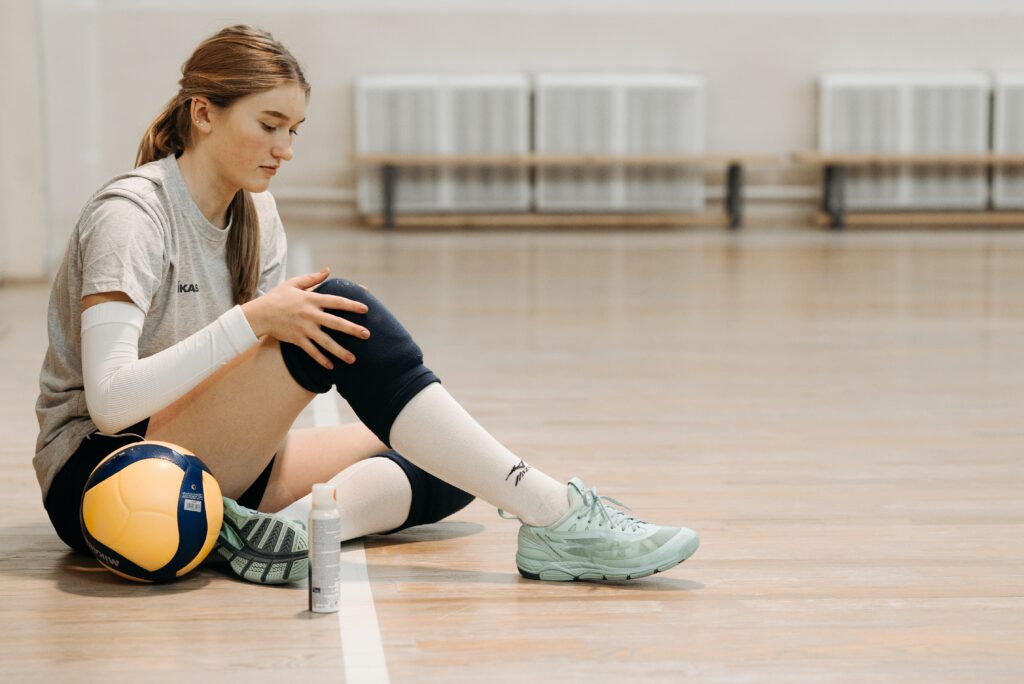How Physical Therapy Can Help You Recover from Patellar Tendinitis and Prevent Re-injury
Introduction
Dealing with knee pain can be overwhelming, and the possible causes and treatments can feel intimidating. Physical therapy is an excellent tool for those dealing with patellar tendinitis, or Jumper’s Knee. With the help of a physical therapist, you’ll be able to identify what’s causing your pain and develop a personalized plan that will help you get back to enjoying your favorite activities as quickly as possible.
Physical therapists are highly trained professionals who specialize in helping people restore movement and reduce pain. They create individualized plans of care by combining their expertise and knowledge with comprehensive evaluations to determine the best course of action for each patient. Your physical therapist may recommend exercises, manual techniques, modalities such as heat or ice, and lifestyle changes to help you achieve the best possible outcome.
What To Expect At Physical Therapy
When beginning physical therapy for patellar tendinitis, your physical therapist will complete a comprehensive evaluation to determine what factors are contributing to your knee pain. Your medical history will be taken into consideration in order to provide an individualized treatment plan tailored specifically for you. They may also conduct tests such as range-of-motion testing and strength assessments in order to identify which muscles need extra attention during treatment.
After this assessment is completed, your physical therapist will create a personalized treatment plan that may include exercises, manual techniques, modalities such as heat or ice, and lifestyle changes.
What Types of Exercises Might You Do?
Your physical therapist can provide you with a variety of exercises to help reduce pain and restore mobility in your knee. These may include:
Quadriceps stretches – to improve flexibility and range of motion
Isometric quadriceps strengthening – to gradually build strength in the muscles around the knee joint
Eccentric single-leg squats – to strengthen the knee while also helping with balance
Single leg squat jump – to increase power and explosiveness in the lower body
Clamshells – to help increase strength in the glutes
Balance exercises – to help with overall body awareness and stability
Your physical therapist will provide instructions on how to properly perform these exercises, as well as modifications or progressions depending on your individual needs.
How Long Does Recovery Take?
The amount of time it takes to recover from patellar tendinitis depends on a number of factors such as the severity of the injury, adherence to the treatment plan, age, etc. Most people are able to return back to their regular levels of activity within 3-4 months using conservative treatments like physical therapy. However, if there is severe tendon damage or multiple cases of reinjury then surgery may be recommended followed by physical therapy for rehabilitation postoperatively.
How Does Physical Therapy Help Prevent Re-injury?
Physical therapy can help prevent re-injury by helping to strengthen the muscles that support your knee joint. This is especially important if you are an athlete or someone who participates in physical activity on a regular basis. Your physical therapist can also provide you with guidance and education on proper form and technique for any activities or exercises that may have contributed to the injury in the first place. Finally, they will progress your exercise plan accordingly as your strength, flexibility, and mobility increase so that you can safely return back to all of your normal activities without risk of re-injury.
Conclusion
Patellar tendinitis is a common overuse injury that affects athletes and active individuals alike. With the proper care and treatment, recovery is possible with minimal time away from your regular activities. Physical therapy plays an important role in helping you recover by providing both therapeutic exercises and education on how to prevent re-injury.

